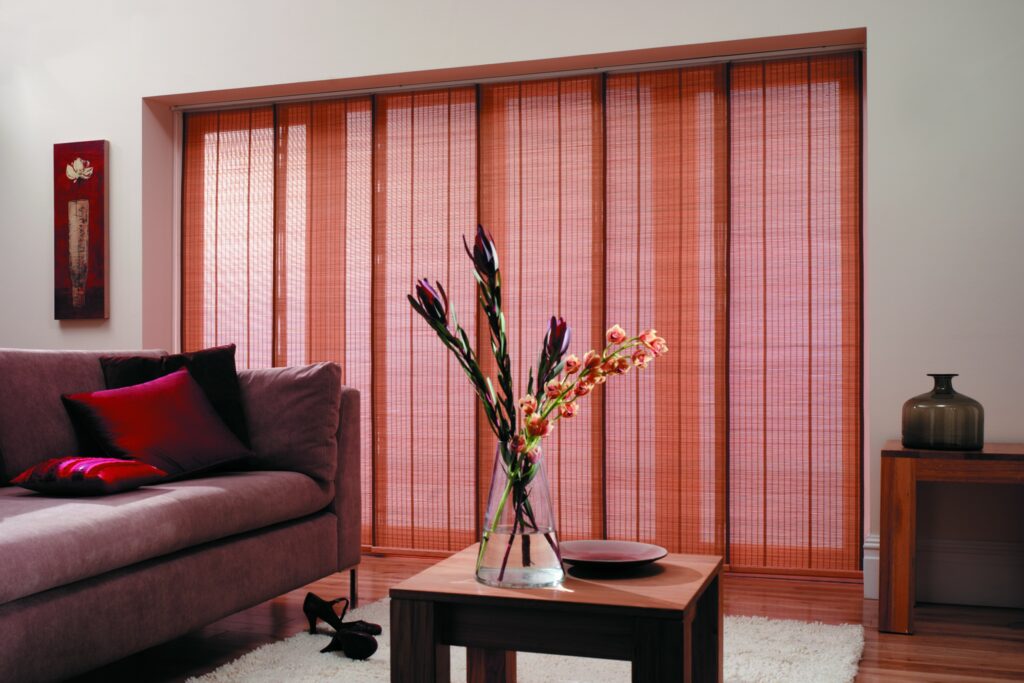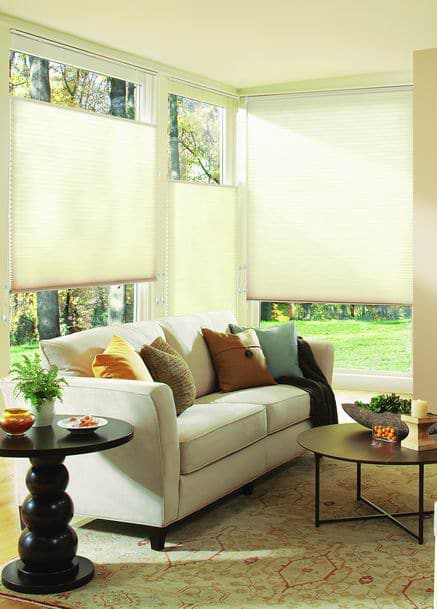With modern architecture focusing on open-plan designs and an abundance of natural light, as well as developments in glass technology, our windows are getting bigger.
Large windows can result in loss of heat in the colder months and can also let in too much heat in the warmer months. This can have undesired impact on the comfort levels within your home – which cause us to seek relief with an air-conditioners or fans, resulting in a higher power bill.
Traditional fabric blinds – Roller blinds, Roman shades, Panel glides and Vertical blinds
- Advances in fabric technology mean these blinds have good insulating capabilities, as long as they are fitted well.
- Textured fabrics, fabrics with reflective weaves, fabrics with block-out capability, and layered fabrics are all popular choices for these styles of blind. They also come in a wide variety of colours.

Honeycomb blinds
At first glance, honeycomb blinds don’t seem as though they’d have a significant insulating impact as the fabric is hollow.
- The hollow design is what gives these blinds their insulating properties. Air is a poor conductor of heat, very little heat passes through the structure of the blind, helping maintain your homes internal temperature.
- Cellular fabric blinds are available in a range of colours and opacities, from block-out to sheer options.
- Honeycomb blinds are ideal for large windows and difficult to reach windows such as skylights. Honeycomb blinds are also well-suited to motorisation.

Blockout, translucent or sheer?
- Sheer and translucent fabrics diffuse and deflect harsh light, protecting your rooms from the summer sun rays but still allowing light to enter.
- Sheer and translucent fabrics are lightweight and attractive, balancing light control and glare and heat reduction.
- Block-out fabrics offer total light control and have an excellent insulating effect, deflecting heat in summer and trapping in warmth in winter.
- Block-out fabrics are ideal for rooms that receive a high degree of direct sun.
Roughly 40% of your heat or cold is coming through your windows, and anything you put on the window correctly-fitted will make a difference.
Remember;
- Look for where the cold or heat could be coming in from other places around your home
- Be aware of where the worst of the heat and cold weather affect your house.
- Are there certain rooms that getting hotter or colder than others?
And finally, don’t forget external shades. These are often overlooked and can block out the most intense sun or wind!


